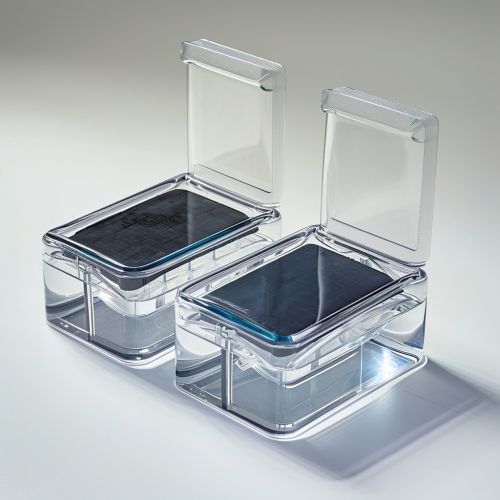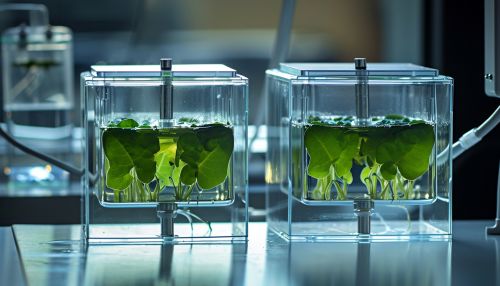Dual-Chamber Microbial Fuel Cells
Introduction
Dual-chamber microbial fuel cells (MFCs) are a type of MFC that utilize the metabolic processes of microorganisms to generate electricity. These systems are composed of two compartments, or chambers, separated by a proton exchange membrane. The microorganisms, or 'biocatalysts', reside in the anode chamber where they oxidize organic matter, releasing electrons and protons. The electrons travel through an external circuit to the cathode chamber, producing an electric current, while the protons migrate through the membrane to the cathode chamber. Here, they combine with electrons and oxygen to form water, completing the circuit.


Principle of Operation
The operation of a dual-chamber MFC is based on the principles of bioelectrochemistry, which is the study of how biological systems interact with electrical and electronic devices. The process begins with the oxidation of organic matter by the microorganisms in the anode chamber. This oxidation process releases electrons and protons, with the electrons being transferred to the anode and the protons being released into the solution. The electrons then travel through an external circuit to the cathode, generating an electric current. Meanwhile, the protons migrate through the proton exchange membrane to the cathode chamber, where they combine with electrons and oxygen to form water.
Microorganisms
The microorganisms used in dual-chamber MFCs are typically bacteria that are capable of exoelectrogenesis, or the ability to transfer electrons to an external electrode. These bacteria, known as exoelectrogens, can be found in a variety of environments, including soil, wastewater, and the human gut. Some examples of exoelectrogens include species of the genera Shewanella and Geobacter. These bacteria are able to use a variety of organic substrates, including simple sugars, complex carbohydrates, and even waste products, as their energy source.
Applications
Dual-chamber MFCs have a wide range of potential applications, from wastewater treatment to energy production. In wastewater treatment, these systems can be used to simultaneously treat wastewater and generate electricity, providing a sustainable and cost-effective solution for waste management. In energy production, dual-chamber MFCs can be used to generate electricity from renewable sources, such as agricultural waste or algae. Other potential applications include biosensors, where the electrical output of the MFC can be used to detect the presence of specific compounds or conditions, and bioremediation, where the microorganisms in the MFC can be used to break down harmful pollutants.
Challenges and Future Directions
Despite the potential of dual-chamber MFCs, there are several challenges that need to be addressed before these systems can be widely adopted. These include the need for more efficient microorganisms, the development of cost-effective materials for the anode, cathode, and membrane, and the scaling up of MFC technology for industrial applications. Future research in this field is likely to focus on these areas, as well as exploring new applications for MFC technology.
